

Sleep - Improving Your Sleep
The information in this section fits most situations, but what you are going
through may be different. If the doctor or nurse tells you to do something
else, please follow what they say.
If you think there may be a medical emergency, go to your nearest hospital
Emergency Room.
Click on the icon at the bottom left of the page to access other helpful phone numbers.
It is not uncommon for people with chronic pain to have disrupted sleep. This chapter is intended to help you learn different ways of improving your quality of sleep and sleep patterns.
Sleep is a very important part of our everyday life. Most people take getting a good night’s sleep for granted.
Unfortunately, many people who have chronic pain have significant problems with their sleep.

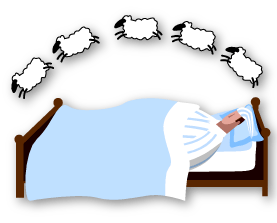
Goals

Learn
How to improve your sleeping patterns


Read
Do
Answer questions, practice the exercises, and talk with your coach
About ways to improve quality of sleep

Goal
Improve sleep quality
PACE - Picking a Problem
-
Introduction
The information in this section fits most situations, but what you are doing through may be different. If the doctor or nurse tells you to do something else, please follow what they say.
It is time to do some detective work and pick a problem that would like to work on. This is the 1st step of PACE!




When I wake up during the night, I just lie there, because it hurts my hip to get in and out of bed.


Every little noise wakes me up. I feel quite edgy
When I wake up during the night, it takes me a long time to go back to sleep.
I want to improve my sleep but I don’t want to keep taking sleeping pills for the rest of my life!
When I don’t sleep well during the night, the next day I take an afternoon nap, but then I don’t sleep well that night because I don’t feel tired enough. I don’t know how to stop this cycle!
I sleep over 14 hours every night and the next day, I still feel tired. I’m always tired!


-
What is Sleep
Sleep is a very important process that we all need to stay healthy and happy. Sleep can affect almost every area of our daily function. There are significant health risks related to poor sleep.
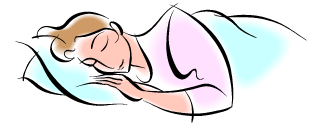
-
Common sleep problems
There are two main categories of sleep problems:
Sleep Apnea
If you:
• Wake up gasping
• Are known to snore a great deal
• Your snoring often wake you up
• Are told by someone that you stop breathing when you are sleeping
Please talk to your family doctor or your doctor in the pain clinic to discuss whether you are at risk for having sleep apnea. Your doctor can refer you for a sleep study.
Sleep apnea can have very serious negative health effects and requires medical treatment.
1. Dyssomnia
A group of sleep disorders that include a difficulty in either falling asleep or staying asleep. Usually this leads to difficulties in concentration and drowsiness during the day.
Examples of sleep Dyssomnia
• Insomnia
• Sleep apnea
• Narcolepsy
• Restless legs syndrome
2. Parasomnia
A group of dysfunction associated with sleep. The sleeper usually wakes up either during or after then event. This type of sleep problem often gets worse with stress.
Examples of Parasomnia
• Sleepwalking
• Sleep talking
• Sleep eating
• Sleep (night) terrors
• Bedwetting
• Teeth grinding
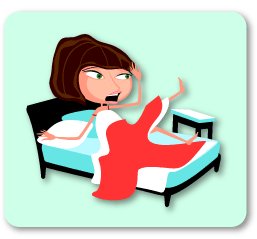
-
Sleep treatments
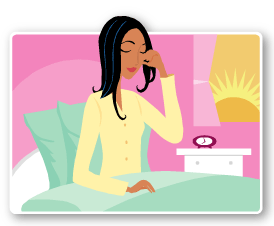
Sleep treatments can include medications and/or behaviour treatments.
Behavioural treatments are actions that you can take and changes you can make to your bedtime routine that can help you have a better night sleep. We will look at these in detail in the Acting upon the problem section. The point of behaviour treatments is to make a stronger connection between your bed and bedtime routine and sleep. Doing the same set of things each night before bed helps to program your body and prepare it for sleep. The things you do during the day and at night can have an effect on your sleep and we call these things sleep hygiene.
For many people, behavioural treatments alone will be very effective in improving sleep. For others; however, combing both behavioural and medication treatments work best. Talk to your doctor about the best way to treat your problems with sleep.
-
The importance of sleep
Your body needs sleep so your:
• Muscles, bones, and skin can grow
• Muscles, skin and other parts can fix injuries
• Body can stay healthy and fight sickness
Your brain needs sleep, so you can:
• Remember what you learn
• Pay attention and concentrate
• Solve problems and think of new ideas
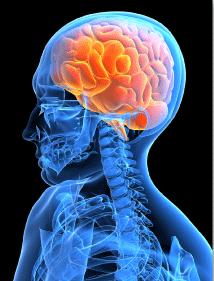
When you do get enough sleep you can:
• Pay attention better
• Be creative and think of new ideas
• Fight sickness so you stay healthy
• Be in a good mood
• Get along with friends and family
Without enough sleep you might:
• Forget easily
• Have trouble making good choices
• Be moody and grumpy
• Have trouble following directions
• Have trouble with leisure activities
• Be clumsy
• Have a hard time doing simple things
• Be less patient
-
Sleep stages
The different stages of sleep are described below. During the night you go through stages 2, 3, 4 and REM over and over in about 90 minute cycles until you wake up.
Stage 1
In this stage, your brain tells your muscles to relax, your heart to beat a little slower and your body temperature to drop a little.
Stage 2
In this stage you will be in light sleep. You can be woken up very easily by a touch or a noise in this stage.
Stage 3
This is a deep sleep stage. Your blood pressure is lowered and in this stage you won’t be able to notice if the temperature a round you changes. People sleepwalk at this stage.
Stage 4
This is the deepest stage of sleep and it is very hard to wake up at this stage. If you do wake up you are usually a little confused for a few minutes. People can sleep walk or sleep talk when going from this stage to a lighter stage of sleep.
Stage 5
REM means rapid eye movement. Your body is totally relaxed in this stage but your eyes move from side to side very quickly under your eyelids. In this stage your heart beats fast and your breathing is less regular. This is the stage of sleep where people dream.
-
Myths and facts
There are many common thoughts on sleep and it is not easy to know which ones are true and which ones are false. You may have heard certain things about sleep or maybe you are experiencing your own difficulties. Relying on false information can be serious and may lead to dangerous situations.
Please see the following list of common thoughts on sleep, then in the box next to it see whether that statement is true or false. You might be surprised about certain answers; it helps to look at the explanation box to see why that common thought turned out to be either true or false.

-
Statistics
Sleeping plays an important role in our lives. Unfortunately, many individuals have had a sleeping difficulty at one point in their lives. Look at the following statistic findings on sleep, you might be surprised!
Did you know?
Approximately 3.3 million (1 out of every 7) Canadians over 15 years old have insomnia
38% of obese women have symptoms of sleep disorder
95% of people with sleep disorders are undiagnosed and untreated
29% of the people with sleep disorders are depressed
-
Example
Cindy picks a problem to work on
Lately my pain has been bad and it’s hard to get a good night’s sleep.
Because of poor sleep at night, I now feel quite tired during the day, so
I started taking naps in the afternoon. Sometimes a nap can last up to
4 hours. When night time comes, I go to bed at the same time as I used
to but I don’t fall asleep until very late. So I just lie there, toss and turn for a while, and end up watching some TV in bed, hoping that will put me to sleep, but it doesn’t work! After a few hours, I usually end up taking a sleeping pill. The next day, I wake up tired and I end up taking a nap in the afternoon. I would like to break this cycle but am not sure where to begin!

-
Worksheet
PACE - Acting Upon the Problem
-
Introduction
Getting a good night sleep
Now that you have clarified what concerns you most, it’s time to decide what to do. Ready… set… action! In this section, the 2nd section of PACE, we will look at how to improve sleep quality in your everyday life.

-
Getting a good night sleep
You may have trouble going to sleep or even staying asleep because
of your pain. You might also find it more difficult to cope with your pain
if you don’t get enough sleep. Please click above for tips to help you
get a better night’s sleep:Maintain a good sleeping environment
• It is helpful to consistently sleep in a familiar room and bed
• Having a comfortable bed
• Make sure that the room temperature is comfortable
• A darker, quieter room is often the best type of room to sleep in
• It is helpful to minimize the distracting and stimulating items in your room
• It is important that your bedroom is not associated with a place where you might feel stress (e.g. it may be a good idea to put the computer where you do your work on in another room, do your paperwork or study in another location of the house)
• Don’t spend too much time awake in bed (especially if you feel distressed). If you lie awake in bed for more than 20 to 30 minutes, you should get up, go to a different room and participate in a quiet activity like reading a book or watching TV (make sure that they are not too exciting or suspenseful; like murder mysteries!)
Alarm Clocks
If you require an alarm clock to wake up in the morning
• Turn your clock away from the bed so that you can’t see it
• Turn down the brightness of the alarm clock if you can – or put it
under the bed! The light from the clock can affect your sleep cycle!• Avoid projection clocks that project the time onto a wall or other
surfaces• If you get up during the night, don’t look at the clock. Do what you
need to do, don’t worry about the time, and go back to bed when you are ready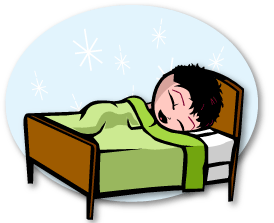
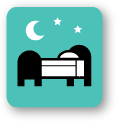
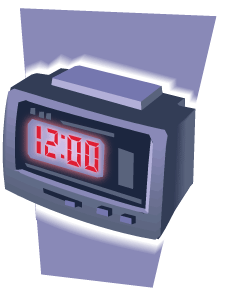
-
DOs and DON'Ts
DOs
• Bedtime routines (taking a bath, reading a book, etc.)
• Consistent waking up times
• Going to bed only when tired
• Regular daily exercise
• Regular exposure to sunlight
• General activity
• Keep hands and feet warm
• Go to bed at the same time each day
• Keep your bedroom temperature comfortable
• Keep your bedroom quiet when sleeping (if your bed-partner snores, or your room is noisy, use ear-plugs)
• Keep your bedroom dark enough to facilitate sleep
• Use a relaxation exercise just before going to sleep (muscle relaxation, imagery, massage, warm bath, etc.)
DON’Ts
• Talk about problems or plans before bed
• Exercise just before bed
• Engage in stimulating activities just before bed, like a competitive game, watching and exciting TV show or movie or an important discussion with a loved one
• Have caffeine in the evening (like coffee, some teas and pop)
• Read or watch TV in bed
• Go to bed too hungry or too full. Your last meal should be at least three hours before bed (a light snack rich in carbohydrate before bed may be okay (like a bowl of cereal or a piece of toast
• Take daytime naps (if you feel like you should take a nap, restrict the nap to 20 to 30 minutes)
• Spend too much time awake in bed (don’t lie awake in bed for more than 20 to 30 minutes)
• Smoking and excessive alcohol
-
Example
Cindy takes action
After reading about sleep hygiene in the PAIN 101 program, I understand
that naps shouldn’t be longer than 20 to 30 minutes.”“I am now working on minimizing my nap time to 30 minutes, by setting
my alarm clock. Having shorter naps helps me fall asleep easier at
nighttimes, while giving me enough energy to keep going during the day.

-
Worksheets
Please click on the icon below to access the WORKSHEET you will need to fill out for this section. Your coach will go through your answers with you over the next telephone conversation, or you can bring them to your next clinic appointment.
Click on this icon to access the worksheet for this section.

PACE - Challenges You May Face
-
Introduction
Even with the greatest plans we can sometimes come across obstacles. Before moving on with your plan, it is important to look at some of the challenges you may be facing. This brings us to the 3rd section of PACE.
The next pages describe some common doubts that other people with chronic pain have shared with us in regards to sleep.
Sleep Difficulties
Common doubts that other individuals with chronic pain and sleep
difficulties have shared with us include• Feeling guilty for sleeping for a long time
• Things that can’t be controlled during the night, like
disruptive noises
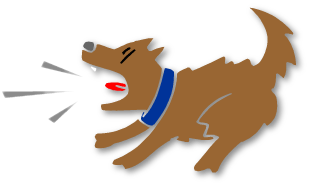
-
I feel guilty when I sleep for a long time
Unfortunately, we live in a society that does not value sleep. Have you
ever noticed how we tend to place more importance on the quantity of
hours we spend on something rather than the quality of time?Many people who work long hours and have busy lives often lack sleep.
As a result they many struggle with stress, anxiety, and irritability.People in our society have a tendency to reward this kind of lifestyle.
This reinforces unhealthy habits!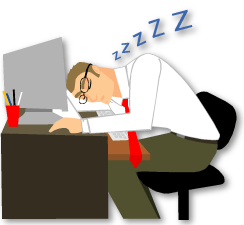
-
What about when there are things during the night that I can't control, like noise?
There are things sometimes that may keep you up at night, like a dog’s bark, a
spouse/partner who is tossing and turning or snoring, the wind, or light, etc. For
blocking noise, you may want to consider wearing ear plugs at night (keep in
mind that ear plugs may also block out important sounds like a baby’s cry and it
is not recommended for parents with small children to use).If light keeps you up or wakes you, you may want to install thick, dark curtains
or blinds to block the light from outside, or even wear a sleep eye mask. If you
lack sleep because your spouse/partner tosses and turns, you may want to
consider sleeping in separate beds.
-
Example
Challenges Cindy faces with her plan
Taking shorter naps help me fall asleep more easily at night, but I am still
facing some problems. When my husband starts snoring, I am guaranteed
to wake up and then I usually have a hard time falling asleep. The next
day, I feel tired and don’t feel functional, so I end up taking longer naps to
make up for lost sleep. I feel like I am in the vicious cycle again.Cindy gets more help
I talked to my coach regarding the nuisances I was facing with my plan. I
was advised to wear ear plugs before bed to help block sounds, like my
husband’s snoring. My coach also recommended that when I wake up at
night, instead of staying in bed restless, I should get out of bed to read,
drink a glass of milk, watch a little TV, etc to help fall asleep. Then, return
to bed when I feel relaxed and tired.



-
Worksheet
PACE - Evaluating Your Plan
-
How did your plan work?
This brings us to the final step of PACE, evaluating your plan. Just like using a scale, weigh out how successful the plan was in dealing with the problem you picked to work on.
Reading about chronic pain and doing the activities required in this chapter may have brought up some concerns that you have in your life.
• Look at the concern you identified
• Did your plan work?
• Do you see some improvement?
• Look at the things that did work
Try not to fix everything all at once. Depending on the problem, some things may take longer to work on than others.
Click on the video to learn more about evaluating your plan.


-
How will you know if you need to modify your plan?
Try of a week or two and track how well your plan is working. At the end of every day write down what is working and what isn’t.
Reward yourself for progress as often as you can. Remember that changing behaviours, especially when you are in pain and feeling tired and stressed can be hard. If you persist, you will see rewards!
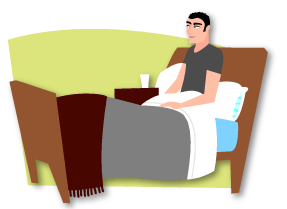
-
Different ways of keeping up with your plan in your everyday life
Good job, for getting this far! Now that you have done all the steps necessary to work on the problem you picked, it is important to find ways of applying them in your everyday life.
Asking your support network, like your friends and family, to help motivate you with your plan is also a great idea.

-
Example
Cindy evaluates her plan
I’m glad that I asked for more help on the problems I was facing with
sleep. I used the advice I got on ways to help improve my sleep, and find
that wearing earplugs really blocks out the sound of my husband’s
snoring, which no longer interrupts my sleep. For the odd times that I
struggle with sleep, I now get up from bed and read in the living room for
a bit, until I feel sleepy, then return to bed. Ever since I have been doing
this, I no longer feel the need to take long naps during the day. Whenever I feel the need for a nap, I now set up my alarm to assure that I don’t sleep longer than 20 minutes. I find that these techniques really work well!

-
Worksheet
-
Example 2
How Cindy will stay on track
The key to staying on track with my plan on improving my sleep is to
consistently keep my naps short, wear ear plugs at night and to avoid
staying in bed when I am feeling restless. I already feel better using those
methods; now, all I need to do is keep doing what is working for me, for
great results.

-
Worksheet
Checklist
Clicking on the icon below will link you to a CHECKLIST of situations you maybe going through; it also allows you to express some of your difficulties or concerns.
Click on the icon to access the checklist

Resources
If you are interested in learning more about this subject, please click on the icon below to consult the references. If you need help finding any of these resources you can ask any member of your team.
Facts and stats on sleep
• www.statcan.ca/english/ads/82-003-XPE/pdf/17-01-05.pdf
Sleep
• www.sleepfoundation.org/sleeplibrary/index.php?secid=&id=63
• www.helpguide.org/life/sleeping.htm
Sleep aids
• www.spine-health.com/topics/conserv/sleepaids/sleepaids01.html
Sleep and pain
• www.webmd.com/osteoarthritis/guide/arthritis-aches-keeping-you-up
• www.sciencedaily.com/releases/2007/04/070402102126.htm
Insomnia
• www.spine-health.com/topics/conserv/insomnia/insomnia1.html
The following books can help you further understand the subjects below:
Sleep Disorders
A Clinical Guide to Sleep Disorders (2001). Dr. Gregory Store. Cambridge: Cambridge University Press.
Take a look at the following list of articles, maybe they could help you understand certain things that you want to know more about.
Chronic pain and Insomnia
Bethesda. M.D. Integration of behavioral and relaxation approaches into the treatment of chronic pain and insomnia. National Institutes of Health Technology Assessment Conference statement. October 16-18, 1995.
Stiefel, F., & Stagno ,D. Management of Insomnia in Patients with Chronic Pain Conditions. CNS Drugs, Volume 18, Number 5, 2004, pp. 285-296(12).


Conclusion
You are done this chapter. By finishing this chapter and completing all the worksheets you have learned many skills. We hope that you have solved your problem using PACE and learned many new ways to tackle problems that you may have in the future. You have put in a lot of work in this chapter so give yourself a pat on the back.
In this chapter you have read about:
• The importance of a good night’s sleep.
• Tips that will help you improve your sleep patterns.
• Different sleep problems
• Various sleep treatments
• The dos and don’ts of sleep
• How to create a good bedtime routine
• Ways that will improve your sleep patterns.
Clicking the Next button will bring you to the chapter on dealing with stress and anxiety, or if you prefer, you may choose a different chapter from the menu on the left.

Introduction
Goals
P - Picking a Problem
A - Acting Upon the Problem
C - Challenges You May Face
E - Evaluating Your Plan
Checklist
Resources
Conclusion
Glossary




